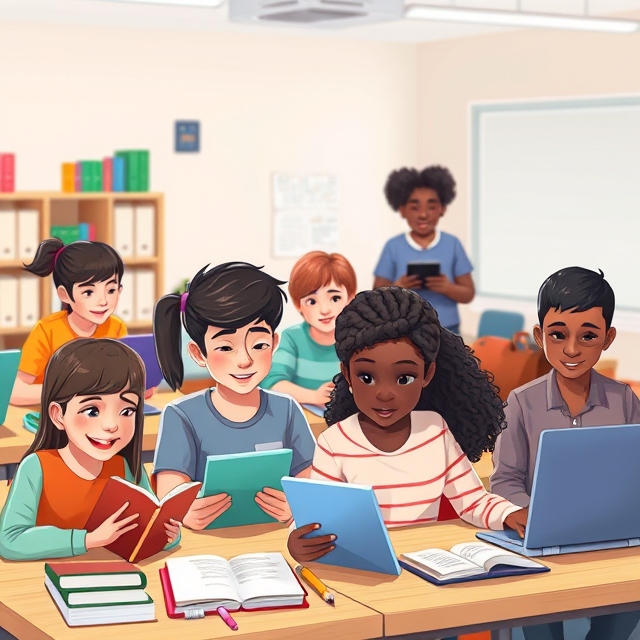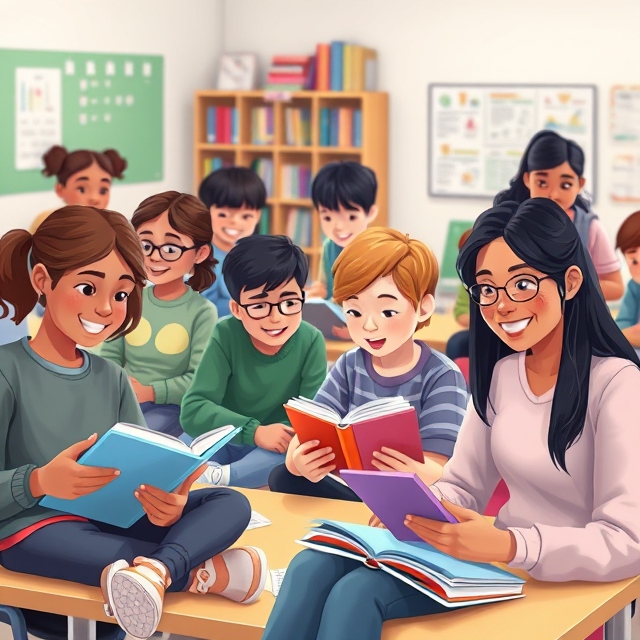In today’s educational landscape, creating equitable and accessible learning spaces is more important than ever. As classrooms become increasingly diverse, ensuring that all students, regardless of background, ability, or circumstance, have the opportunity to thrive is essential. Equity and accessibility initiatives aim to break down barriers to education, ensuring that every student—whether they have disabilities, come from underrepresented communities, or face financial challenges—has the tools and support needed to succeed. From innovative technologies to inclusive teaching practices, these initiatives are transforming the way we approach learning and fostering environments where all students can reach their full potential.

1. What is Equity and Accessibility in Education?
Equity in education means providing every student with the resources and opportunities they need to succeed, recognizing that not all students start from the same place. This often involves offering additional support to students who face greater challenges or disadvantages, such as low-income students, students with disabilities, or students from marginalized communities.
Accessibility, on the other hand, refers to making learning materials, environments, and experiences accessible to all students, including those with physical, sensory, or cognitive disabilities. It ensures that students can engage with the content and participate in the learning process in ways that meet their needs.
Together, these principles create an environment where every student is given a fair chance to succeed, regardless of their background or abilities.
2. The Importance of Creating Inclusive Learning Spaces
Creating inclusive learning spaces goes beyond just physical accessibility—it’s about building a culture of respect, understanding, and support. When students feel seen, heard, and valued, they are more likely to engage with the material, participate in class discussions, and develop a sense of belonging.
Inclusive learning spaces provide:
- A sense of belonging: Students from diverse backgrounds feel accepted and empowered to contribute to their education.
- A positive learning environment: When all students’ needs are addressed, the classroom becomes a place where creativity, innovation, and collaboration can flourish.
- Improved academic outcomes: Students who feel supported and have access to the right resources are more likely to perform well academically.

3. Key Initiatives to Promote Equity and Accessibility
a. Universal Design for Learning (UDL)
Universal Design for Learning (UDL) is an approach to teaching that focuses on providing multiple means of engagement, representation, and expression. This approach recognizes that students have diverse learning styles, strengths, and needs. By offering various ways for students to engage with the material—such as through visual aids, audio resources, hands-on activities, and digital tools—UDL helps ensure that all learners can access and understand the content.
b. Assistive Technology
Assistive technologies play a crucial role in making education accessible to students with disabilities. These tools include screen readers for students with visual impairments, speech-to-text software for students with learning disabilities, and communication devices for students with speech impairments. By integrating these technologies into the classroom, schools can provide students with the support they need to participate fully in their education.
c. Culturally Responsive Teaching
Culturally responsive teaching involves recognizing the cultural backgrounds and lived experiences of students and using that knowledge to create more inclusive learning experiences. By incorporating diverse perspectives and materials into lessons and acknowledging the unique challenges faced by underrepresented students, educators can create a learning environment that reflects the diversity of the student body.
d. Financial Aid and Scholarships
Financial barriers can often prevent students from accessing higher education. Equity initiatives such as scholarships, grants, and financial aid programs help make education more affordable and accessible for low-income students. These programs help level the playing field, giving all students the opportunity to pursue their academic goals.
e. Social-Emotional Support and Mental Health Resources
Equity and accessibility also extend to supporting students’ emotional and mental well-being. Programs that focus on social-emotional learning (SEL), counseling services, and mental health resources ensure that students have the emotional support they need to succeed academically. This is especially crucial for students facing challenges such as trauma, mental health issues, or social isolation.
4. The Role of Teachers in Promoting Equity and Accessibility
Teachers are at the forefront of creating inclusive classrooms. They play a pivotal role in:
- Differentiating instruction: Tailoring lessons to meet the diverse needs of students, whether through group work, hands-on activities, or individualized support.
- Building inclusive classroom cultures: Creating a welcoming environment where all students feel valued and supported.
- Advocating for students: Being aware of students’ unique needs and advocating for necessary accommodations, resources, and opportunities.
By practicing inclusive teaching strategies, educators can ensure that every student, regardless of their background or abilities, has the opportunity to succeed.
5. The Impact of Inclusive Education on Society
Equity and accessibility in education are not just about benefiting individual students—they are about shaping a more just and equitable society. By providing every student with the tools and support they need to succeed, we are fostering a generation of individuals who are better equipped to contribute positively to society. Inclusive education leads to a more diverse workforce, reduced inequality, and a stronger, more connected community.
6. The Future of Equity and Accessibility in Education
As we continue to innovate and evolve in education, the push for equity and accessibility will only grow stronger. Advancements in technology, including AI and adaptive learning tools, are making it easier than ever to personalize learning and meet the needs of all students. At the same time, there is a growing recognition of the importance of addressing social, emotional, and mental health needs to ensure students’ overall well-being.
In the future, we can expect to see even more emphasis on:
- Inclusive curriculum development that represents a broad range of perspectives and cultures.
- Increased access to technology for students from all backgrounds and abilities.
- Collaborative efforts between schools, communities, and policymakers to create truly inclusive learning environments that address the needs of all students.

Conclusion: Creating a More Inclusive Future
The movement toward equity and accessibility in education is about providing equal opportunities for all students to succeed. By embracing initiatives like Universal Design for Learning, assistive technology, and culturally responsive teaching, we can create classrooms where every student feels empowered, supported, and ready to thrive. These efforts not only enhance the academic success of individual students but also contribute to a more just and inclusive society as a whole.






